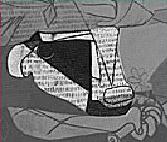1937

Background
Spain 1931
After causing rapid inflation and losing support from the army, the dictator appointed by King Alfonso XIII is forced to resign
July 1936
General Francisco Franco leads a failed military coup for a Nationalist party, which then leads to Spanish Civil War. Germany and Italy directly supported Franco and sought to test out new military equipment. Russia was the only country in direct support of the Republic. France and America's lack of support is often criticized.
On a side note, there were a couple thousand American volunteers who fought for the Second Republic called the Abraham Lincoln Brigade. Many of the people who volunteered for the Abraham Lincoln Brigade were official members of the Communist Party USA or affiliated with other socialist and anarchist organizations. During WWII members of this brigade were considered risks to security by the American government.
1939
Francisco Franco is victorious and begins his 36 year long rule. Supporters of the Second Republic are targeted by social status become refugees and placed in concentration camps during the Second World War. Although King Alfonsio XIII supported Franco, Franco never acknowledged it. King Alfonsio never returned to Spain and passed on the right to the thrown to his 4th son.
Guernica
Commissioned by Spain's Second Republican government in 1937, the painting is a depiction of the brutal bombing of Guenrica by the Germans during the Spanish Civil War.
The center is occupied by a horse falling in agony as it had just been run through by a spear or javelin. The large gaping wound in the horse's side is a major focus of the painting. The newspaper print on the horse symbolizes the way Picasso learned of the event.
According to Picaso the horse represented the people of Guenrica, and the bull represented brutality and darkness. He has also said that the bull is a bull and a horse a horse, and that it was not his intent to give them meaning.
A dream and lie of Franco - Picasso 1937
The image of a skull within the body of the horse
The mouth of the skull also has resemblances to a bull ramming its head into the body of the horse.
On the ground beneath the horse lays a dead soldier holding a broken sword a symbol of defeat from which a flower grows. On his open palm there is a stigma which is a symbol for martyrdom derived from the stigmata of Christ.
A light bulb blazes in the shape of an evil eye over the suffering horse's head (the bare bulb of the torturer's cell). The Spanish word for light bulb is bombilla.
A frightened female figure, who seems to be witnessing the scenes before her, and appears to have floated into the room through a window. Her arm, also floating in, carries a flame-lit lamp. The flame is positioned very close to the bulb, and is a symbol of hope, clashing with the light bulb.
Dagger shaped tongues enhance the emotion being expressed by the woman and bull. The tail of the bull , perhaps Franco, symbolizes the gaseous flames that consumed the landscape during the war. The child's future is being predicted with a war plane shaped scene depicted in the mother's hands.












No comments:
Post a Comment